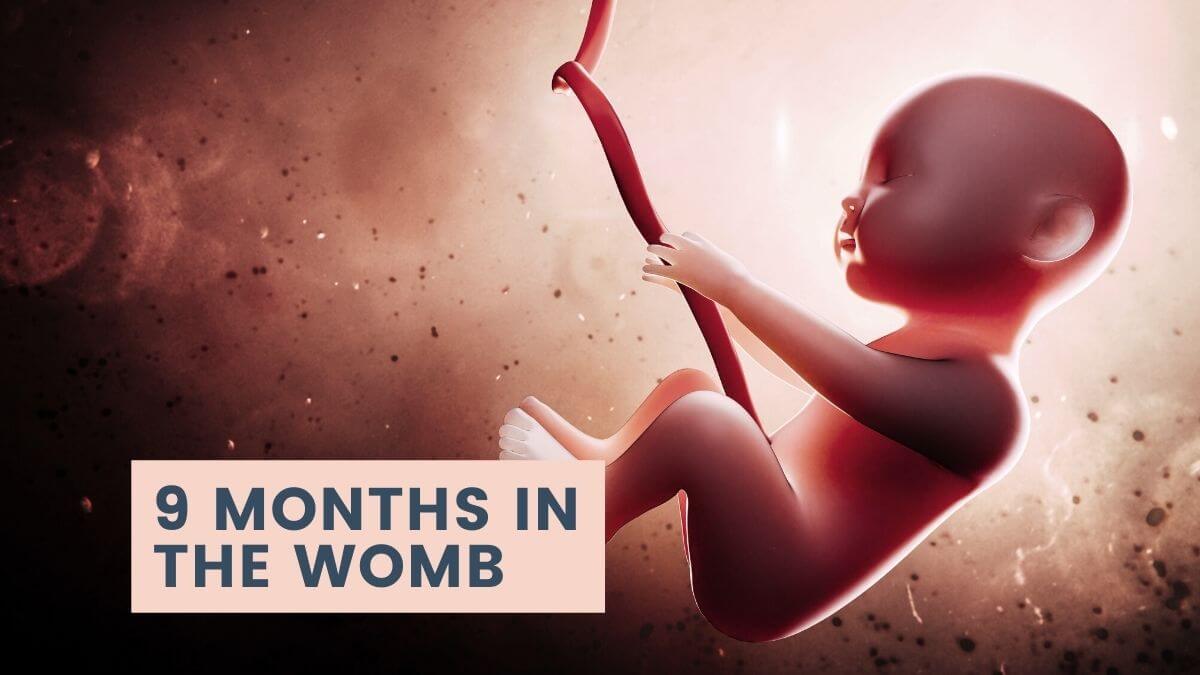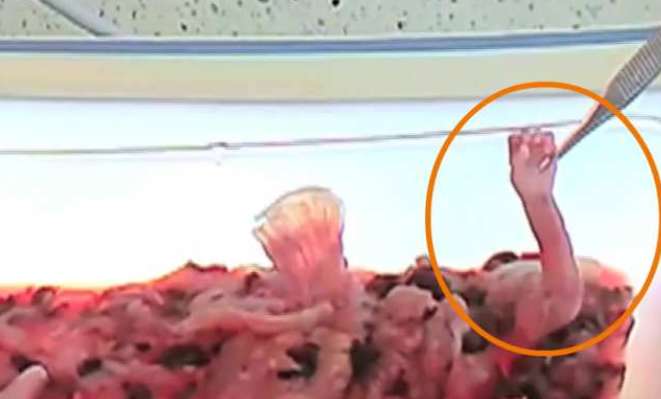SEE THE BIOLOGY – 9 months in the womb
Here’s what a preborn baby actually looks like inside the womb.
Ages are dated from conception.
1 week – 3 weeks
At the moment of fertilization a baby’s unique DNA is formed, determining eye colour, hair colour, and gender. By 3 weeks, the brain, spinal cord and heart have all started to develop. The baby’s heart starts to beat at the end of the 3rd week.
4 weeks
The heart is pumping the baby’s own blood to his or her brain and body. The brain is developing rapidly. Arms and legs begin to grow.
5 weeks
Tiny fingers are beginning to form. The baby reflexively turns away in response to touch on the face.
6 weeks
Brainwaves have been measured and recorded. The baby is about ½ inch from head to rump.
7 weeks
The hands start to move and the neck can turn. The baby has started to hiccup! Girls now have ovaries and boys have testes.

8 weeks
Fingers and toes are now fully formed. Most babies start to show the first signs of right or left handedness. The baby’s overall appearance and most internal structures closely resemble a newborn.

9 weeks
The baby periodically sighs and stretches and has started thumb-sucking and yawning.
10 weeks
The baby’s unique fingerprints start to form. Fingernails and toenails start to grow. The baby now measures about 3 inches from head to heel.
11 weeks
The lips and nose are now fully formed and the baby can make complex facial expressions.

12 weeks
The baby now has taste buds. He or she measures just under 5 inches from head to heel.
13 weeks
The baby responds to touch. Teeth have started to develop.
14 weeks
The baby weighs around 4 ounces and measures just under 7 inches from head to heel. The pregnant mother may begin to feel the baby move.
15 Weeks
The baby begins storing energy in the form of baby fat.
16 weeks
The baby weighs around 6 ounces and measures about 8 inches from head to heel.

17 weeks
More than 20 million heartbeats have occurred.
18 weeks
Between 18-21 weeks, rapid eye movement begins. These eye movements are similar to those seen when a child or adult is dreaming. The baby weighs about 9 ounces and measures about 10 inches from head to heel.

19 weeks
Breathing patterns, body movements and heart rate begin to follow daily schedules.
20 weeks
Hair has started to grow on the baby’s head. The baby weighs slightly under one pound and measures about 11 inches from head to heel.

21 weeks
If born prematurely from this point on, survival is possible.

Baby Samuel grasps the surgeon’s finger during an in utero operation.
22 weeks
More than 30 million heartbeats have occurred. The baby weighs about 1 ¼ pounds and measures around 12 inches from head to heel.
23 weeks
Breathing motions may occur up to 44 times per minute.
24 weeks
Loud noises may startle the baby causing increased movement, heart rate, and swallowing.

25 weeks
The baby now has the ability to taste.
26 weeks
The eyes can produce tears and the baby’s sense of smell is functioning. The baby weighs more than 2 ½ pounds and measures about 15 inches from head to heel.
27 weeks
Pupils of the eyes react to light.
28 weeks
The baby weighs around 3 ¼ pounds and measures about 16 inches from head to heel.
29 weeks
Wrinkles in the skin are starting to disappear as the baby is putting on more body fat.
30 weeks
Breathing movements occur up to 40% of the time. The baby weighs about 4 pounds and measures around 17 inches from head to heel.
31 – 32 weeks
The baby weighs about 5 pounds and measures about 18 inches from head to heel.
33 – 34 weeks
The baby weighs about 5 ¾ pounds and measures about 18 ½ inches from head to heel.
35 – 36 weeks
The baby now has a firm hand grip and the heart has beat more than 50 million times. By 36 weeks the baby now weighs about 6 ¾ pounds and measures about 19 inches from head to heel.
37-38 weeks
The baby continues to grow and put on weight until birth. At full-term birth, babies typically weigh 6-9 pounds and measure 18-21 inches.
*Prenatal Development facts from The Endowment for Human Development www.ehd.org/prenatal-summary.php










